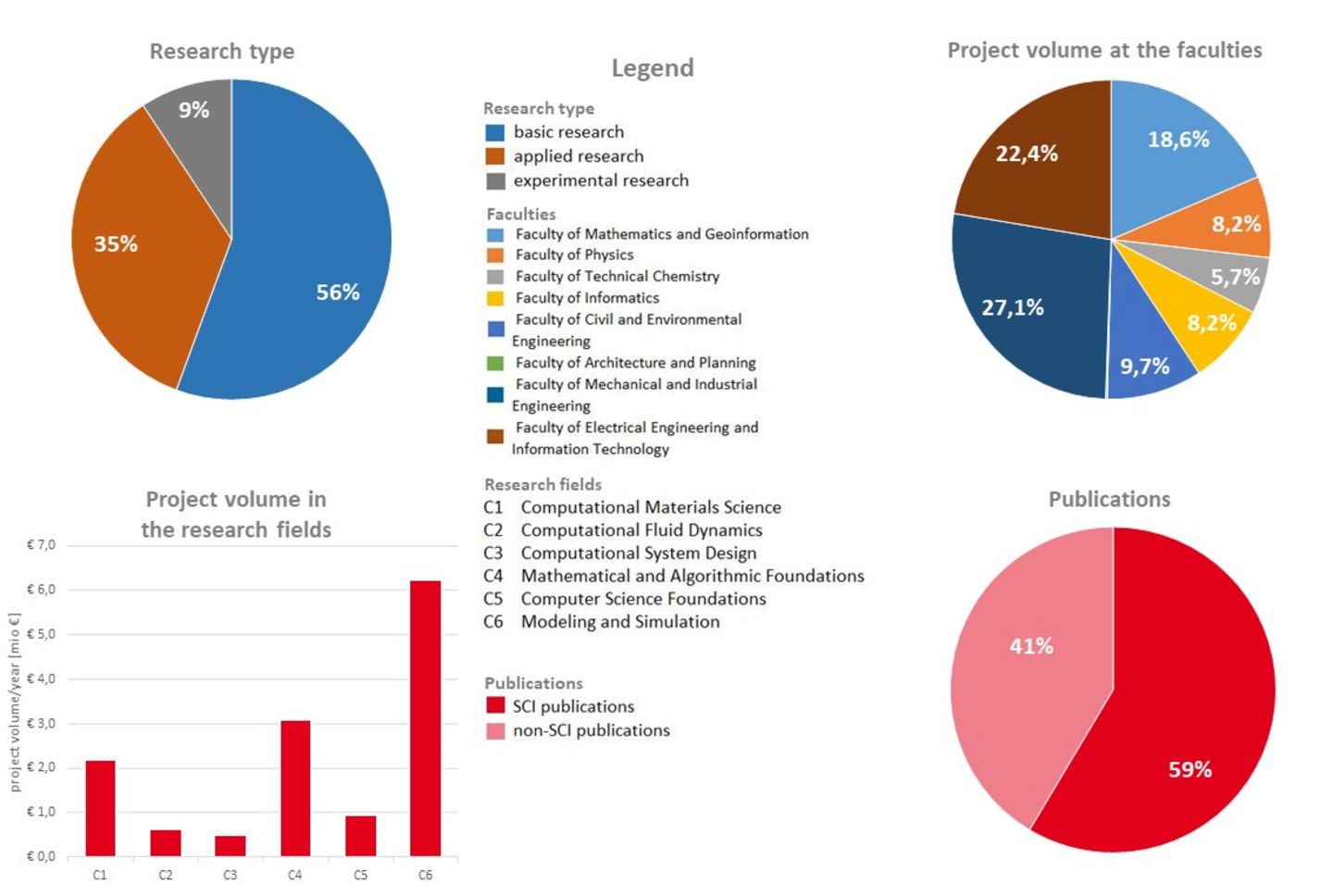Computational Science and Engineering
For a long time, it was possible to divide the research into just two different areas: theoretical research, which seeks to describe the world using formulas and laws of nature, and experimental research, which checks the predictions of the theories and discovers new natural phenomena. And then a third area came along: computer-aided research.
Many academic questions are so complex that they cannot be solved using pen and paper. Experiments are also often insufficient for analysing these types of complex systems. Modern computer technology offers an opportunity to simulate such systems with precision and gain completely new insights. The key research area of Computational Science and Engineering has enjoyed international acclaim for many years.
Faster, better, more accurate
TU Wien carries out research not only into the fundamentals of computer technology but also into applications for specific scientific and technological questions. New mathematical methods are being developed to be able to solve a wide variety of computational tasks more efficiently. In information technology, established knowledge in the software and hardware fields is used to extend the limits of the possible ever further. However, irrespective of how powerful modern parallel computers become and irrespective of how intelligent modern numerical methods are, for the increasing demands that science and technology place upon computers and their computational power, the best is still only just good enough. Whether it is in nuclear physics or construction analysis, in materials chemistry or fluid mechanics, every advance in computing power is used immediately to increase the accuracy and depth of detail of simulations and modelling calculations. At TU Wien, a particularly powerful mainframe computer is available for numerical simulations: the Vienna Scientific Cluster (VSC) is operated at TU Wien and, in collaboration with other Austrian universities, is used for a variety of research projects.
Basic research and cross-disciplinary collaboration as a springboard
To solve scientific questions efficiently and reliably, you also need basic research in computer science, for example to improve computer processes – at the levels of software, hardware and system design. Analysis of the flow behaviours of fluids and gases is traditionally one of the most complicated problems to calculate in science.
Once the behaviour of the very smallest material component is understood, it is possible not only to solve fundamental scientific mysteries, but also to develop new materials for industry. Materials science, quantum theory and computational science combine to form a new, innovative cross-disciplinary field in which TU Wien has had significant success (partly in cooperation with national and international research partners).
Complex processes and relationships can be analysed and modelled with cross-disciplinary approaches and computer-aided methods.
- Computational Materials Science
- Computational Fluid Dynamics
- Computational System Design
- Mathematical and Algorithmic Foundations
- Computer Science Foundations
- Modeling and Simulation
Computational Science and Engineering is a particularly multifaceted research focal area with projects in all faculties. Two thirds of the project volume is research carried out by three faculties – Mechanical and Industrial Engineering, Electrical Engineering and Information Technology, and Mathematics and Geoinformation. Around 86% of the institutes are carrying out research in the field of computational science with 101 research groups.
The success of this focal research area can be seen in lucrative research grants – such as the Christian Doppler Laboratories, Special Research Programmes (SFBs) awarded by the Austrian Science Fund (FWF), or COMET projects by the Austrian Research Promotion Agency (FFG). The third-party funding obtained in 2019-2021 for research projects in Computational Science and Engineering is approximately EUR 13.5 million per year (about 185 projects annually). The academic output is reflected in the approximately 455 publications per year.

Breakdown of project volume by share of research types and share of faculties, project volume in the individual research fields, and breakdown of publications
In the research focal area Computational Science and Engineering, 56% basic research, 35% applied research and 9% experimental development is carried out.
The project volume is divided among the faculties as follows: 18.6% Mathematics and Geoinformation, 8.2% Physics, 5.7% Technical Chemistry, 8.2% Informatics, 9.7% Civil and Environmental Engineering, 27.1% Mechanical and Industrial Engineering, and 22.4% Electrical Engineering and Information Technology.
The project volume in the individual research fields can be presented as follows: EUR 2.2 million in the research field Computational Materials Science, EUR 0.6 million in the research field Computational Fluid Dynamics, EUR 0.5 million in the research field Computational System Design, EUR 3.0 million in the research field Mathematical and Algorithmic Foundations, EUR 1.0 million in the research field Computer Science Foundations and EUR 6.2 million in the research field Modeling and Simulation.
The publications are divided into 59% SCI publications and 41% non-SCI publications.
- Institute of Analysis and Scientific Computing
- Institute for Microelectronics
- Institute of Mechanics and Mechatronics
- Institute of Automation and Control
- Institute of Logic and Computation
- Institute of Solid State Physics
- Institute of Fluid Mechanics and Heat Transfer
- Institute of Lightweight Design and Structural Biomechanics
- Institute of Mechanics of Materials and Structures
- Institute of Structural Engineering
The selection relates to the size of the project volume in the specified period, as well as the proportion of the project volume in the key area of research, the institute project volume, and the proportion of publications.
All data and information provided relates to the research period 2019-2021 (based on the period of the Performance Agreement).
